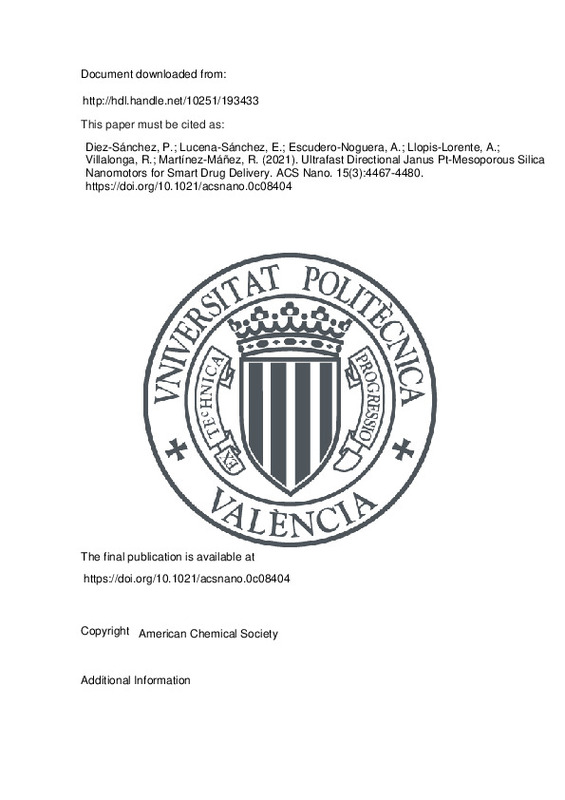JavaScript is disabled for your browser. Some features of this site may not work without it.
Buscar en RiuNet
Listar
Mi cuenta
Estadísticas
Ayuda RiuNet
Admin. UPV
Ultrafast Directional Janus Pt-Mesoporous Silica Nanomotors for Smart Drug Delivery
Mostrar el registro completo del ítem
Diez-Sánchez, P.; Lucena-Sánchez, E.; Escudero-Noguera, A.; Llopis-Lorente, A.; Villalonga, R.; Martínez-Máñez, R. (2021). Ultrafast Directional Janus Pt-Mesoporous Silica Nanomotors for Smart Drug Delivery. ACS Nano. 15(3):4467-4480. https://doi.org/10.1021/acsnano.0c08404
Por favor, use este identificador para citar o enlazar este ítem: http://hdl.handle.net/10251/193433
Ficheros en el ítem
Metadatos del ítem
| Título: | Ultrafast Directional Janus Pt-Mesoporous Silica Nanomotors for Smart Drug Delivery | |
| Autor: | Diez-Sánchez, Paula Villalonga, Reynaldo | |
| Entidad UPV: |
|
|
| Fecha difusión: |
|
|
| Resumen: |
[EN] Development of bioinspired nanomachines with an efficient propulsion and cargo-towing has attracted much attention in the last years due to their potential biosensing, diagnostics, and therapeutics applications. In ...[+]
|
|
| Palabras clave: |
|
|
| Derechos de uso: | Reserva de todos los derechos | |
| Fuente: |
|
|
| DOI: |
|
|
| Editorial: |
|
|
| Versión del editor: | https://doi.org/10.1021/acsnano.0c08404 | |
| Código del Proyecto: |
|
|
| Agradecimientos: |
The authors want to thank the Spanish Government for
RTI2018-100910-B-C41 (MCIU/AEI/FEDER, UE) and
CTQ2017-87954-P projects and the Generalitat Valenciana
for support by project PROMETEO/2018/024. P.D. thanks
the Spanish ...[+]
|
|
| Tipo: |
|







![[Cerrado]](/themes/UPV/images/candado.png)


